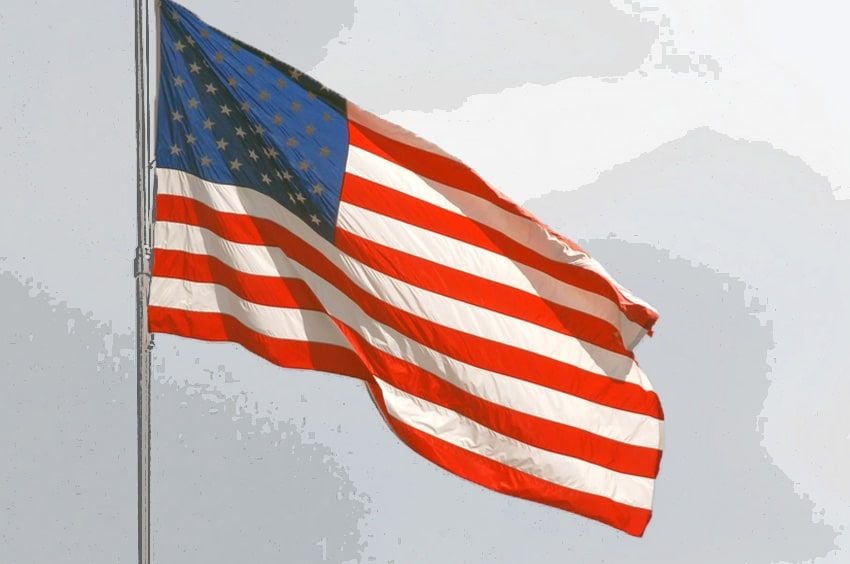Memorial Day Music Class: The History of Armed Service Songs

Here in the US, we celebrate Memorial Day the final Monday in May to honor Americans who have died while in military service. Traditional festivities include parades, picnics and programs paying tribute to those who gave their lives in service to our country. Of course, these events are the perfect opportunity to feature the armed service songs from each military branch: “Anchors Aweigh” for the U.S. Navy, “The Caissons Go Rolling Along” for the U.S. Army, “The Wild Blue Yonder” for the U.S. Air Force, “The Marines’ Hymn” for the U.S. Marine Corps and “Semper Paratus” for the U.S. Coast Guard.
Each of these armed service songs has a rich history and special meaning to those who’ve served and their families. We’ll take a brief look at that history below. Click on any song title to download the sheet music, and remember that $1 from each download will be donated to our local Honor Flight programs!
Anchors Aweigh
Naval Academy bandmaster Charles A. Zimmerman was a Lieutenant when we composed “Anchors Aweigh” in 1906. Collaborating with Midshipman First Class Alfred H. Miles, the march was created to pay tribute to the Academy’s class of 1907. The band debuted “Anchors Aweigh” during the Army-Navy football game on Dec. 1, 1906, at which Navy garnered its first win in the rivaled match since 1900.
The song was so well received that it eventually would be adopted as the official U.S. Navy song, with revised lyrics by George Lottman to focus on military rather than football.
The Caissons Go Rolling Along
The official song of the U.S. Army was based on “Caisson Song,” written by then-First Lieutenant Edmund Gruber stationed at Fort Stotsenburg in the Philippines in March, 1908. A caisson was a cart used in the field. John Philip Sousa was commissioned by the Army to turn it into a march in 1917, and it was renamed “The Field Artillery Song.”
In 1952, as all other U.S. military branches already had adopted official songs, the Army held a contest to find its official song. Eventually it was decided that they would keep the “Caisson” melody and add new lyrics courtesy of Army music adviser Harold W. Arberg, updating the official title to “The Army Goes Rolling Along.”
The Wild Blue Yonder
Officially titled “The U.S. Air Force,” the official song of this military branch came about by contest. Unable to fund the $1000 prize itself, the then-Air Corps allowed the publisher of Liberty Magazine to sponsor its 1937 competition, with the only entry requirement stating songs must be of “simple harmonic structure” and “within the limits of (an) untrained voice.”
Robert Crawford, an aviation enthusiast and music teacher, won the competition. Although, lyrics were updated post-World War II to reflect the military branch’s name change from “corps” to “force.”
In 1971, the original first page of Crawford’s written song submission was carried to the moon aboard the Apollo 15 ‘Falcon’ lunar module, and, as the craft blasted off, a recording of “Into the Wild Blue Yonder” was transmitted to earth via a tape recorder on the ‘Endeavor’ command module.
The Marines’ Hymn
The oldest armed forces anthem, The Marines’ Hymn was in-use as early as the mid 1800s. It was declared the official hymn of the U.S. Marine Corps in 1929.
Although definitive authorship is unknown, it is believed that the rousing hymn’s music may have been a variation on the 1859 French opera “Geneviéve de Barbant.” We know the lyrics reflect historic battles won by the military branch, and many mirror poems written by the author W.E. Christian in his “Rhymes of the Rookies” book.
Semper Paratus
Semper Paratus, or “Always Ready,” has been the U.S. Coast Guard’s official motto since being added to the branch’s flag in 1910.
Captain Francis S. Van Boskerck wrote lyrics for the song incorporating the Coast Guard’s motto in 1922, and five years later, while serving as Commander of the Bearing Sea Forces, he added music. Van Boskerck aimed to write a popular anthem in order to help make the motto as popular as those of the other armed forces.
And there you have it! This Memorial Day, as you hear these historical works performed at various gatherings, think of their history and tradition. Oh, and enjoy the music, too!
Do you have a favorite patriotic song to play for Memorial Day? For those outside of the United States, does your country have an anthem you especially like to listen to and/or play? Share your thoughts with us in the comments below!

